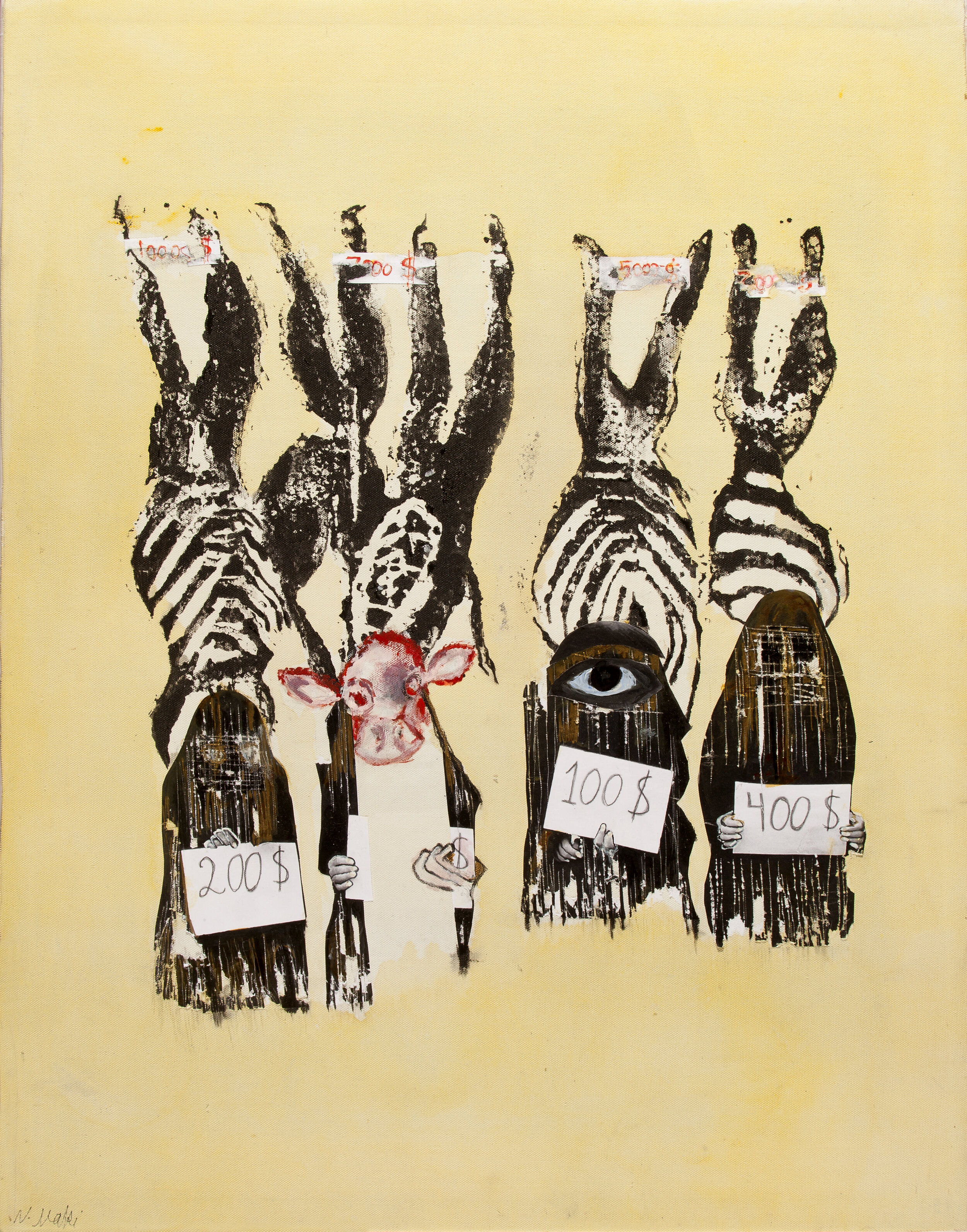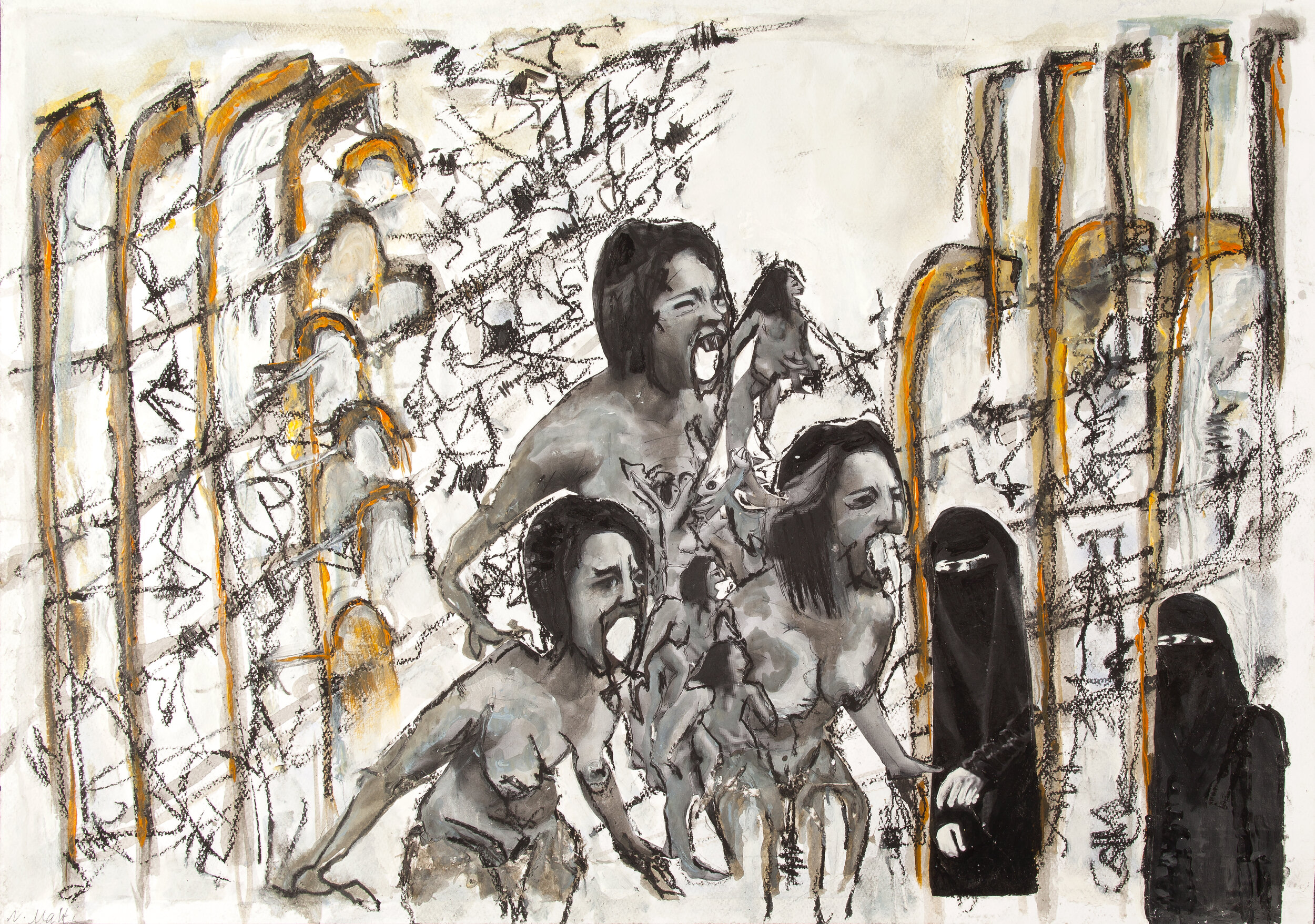NAHRIN MALKI
Nahrin Malki is an Assyrian professional artist and painter currently living in Sweden. Born in Syria, she fled to the Netherlands almost two decades ago, when the Assad regime began to attack the Assyrian community, which has some of the most ancient cultural roots in the region. Indeed, the Assyrian plight in Iraq and Syria is similar to the Yazidi experience, with tens of thousands of people driven out of their ancestral lands.
Nahrin grew up in a secure and liberal family environment where art and learning were encouraged. She was always drawing as a child, even copying stickers for friends who could not afford them, yet she felt trapped and unable to express herself under a regime which suppressed artistic freedoms and creativity. It was in the Netherlands that she was finally able to realize her artistic potential, studying at the AKI Kunstacademie in Enschede: “The Dutch system gave me the freedom to express myself and I immediately felt comfortable; they focused on humanitarian aspects in art and gave meaning to my work”, Nahrin explains.
Her main objective now is to connect the Assyrian people with their heritage and collective experience, through the central theme of suffering in her artwork. The Assyrian diaspora share collective memories of pain, and such communities need help to rehabilitate their lands and repatriate their people. Nahrin wants to remind the international community that Assyrian culture “is very rich and can enrich international culture – our civilization gave a lot to the world.” She works for the recognition of her people as an official ethnic minority in Iraq and Syria, and for the protection of their basic right to practise their religion: “The only solution we can come up with is that they give us a safe haven, with autonomy to protect ourselves, because we do not feel safe among the other groups”, says Nahrin. In her artwork Nahrin combines diverse techniques and materials to move away from the rigidity of traditional art. While black is a dominant colour throughout, she experiments with other colour palettes and says: “I do not pick the colours – the colours tend to pick me.” In her painting “A Scream” Nahrin shows the contrast between what she calls the feminist movement in Europe, where women can be naked, and the Middle East, where women are forced to cover up. “Nineveh” is based on a real-life image, depicting a woman carrying a cross, as when the Assyrians were driven from their villages. Other women are shown covered and confined in captivity, while the hands opposite them reach out for help. Another composition based on a real image is “Sales of Women”, which shows four Yazidi women taken by ISIS and sold as chattel abroad. Here the women are compared to animals, represented by the carcasses hanging above them. Poignantly, the women’s price tags display lower values than those of the animals.
For Nahrin, the restitution of Assyrian culture is a priority: “We have been forgotten about. We want to rebuild our schools that can teach our language and culture, and we want our books and historical artefacts returned to us. Churches in particular are cultural centres of our history since we do not have a country.” She explains that through her artwork and advocacy, she wants to help all persecuted minorities, and not just the Assyrians: “I want to talk about and represent other people who are being killed and brutalized. At the end of the day I am also human, and we are all brothers and sisters in humanity. As an Assyrian I can feel the pain of other people around the world who are suffering.”
Sales of Women
Mixed media on canvas
The Screaming Womb
Mixed media on canvas
A Scream
Mixed media on canvas
The Suffering
Acrylic on canvas
Ninevah
Mixed media on canvas





